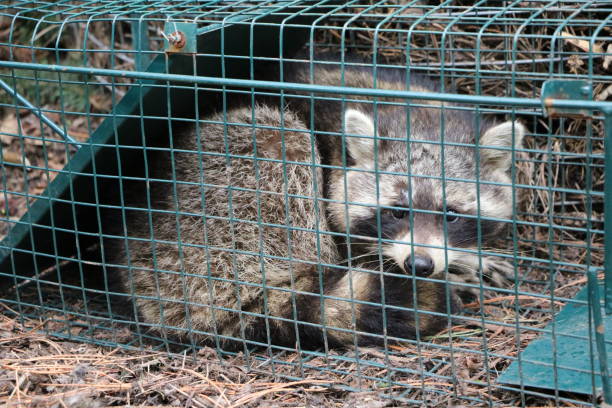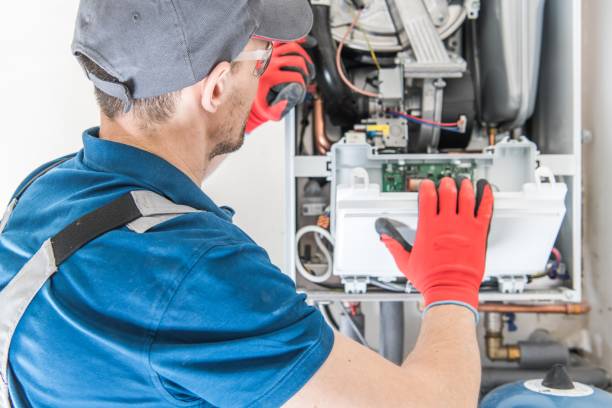Raccoons are sneaky. They crawl into attics, basements, chimneys, or crawl spaces to find food and shelter. Once inside, they can tear insulation, chew wires, and leave droppings that spread germs. Because of these problems, an inspection is the first step before removal.
When families call experts for raccoon removal services in South Central Pennsylvania, they expect a straightforward process. The inspection is never quick or rushed. Instead, inspectors carefully check every corner inside and outside the home. This careful work helps find even the smallest sign of raccoon activity. As a result, homes can be protected safely.
Contact and Information Gathering with Raccoon Removal Services in South Central Pennsylvania
The process begins with a phone call. Inspectors ask simple questions, such as:
- What kind of noises do you hear at night?
- Where have you seen raccoons or droppings?
- Is there damage to the roof or vents?
These questions create an early picture of the problem. For example, scratching sounds often mean raccoons are nesting in the attic, and knocked-over trash bins may indicate they are feeding outside.
Location also matters. Homes near woods, rivers, or fields face a higher risk. Because of this, inspectors prepare before arriving so they know where to look when they reach the property.
Exterior Assessment of Entry Points
First, the outside of the house is checked. Inspectors look at roof edges, chimneys, vents, and soffits. Even a hole as small as a fist is big enough for a raccoon.
They also check gutters, attic fans, and siding boards. Since raccoons climb very well, high spots are just as risky as low ones. After weak points are found, inspectors suggest repairs. Blocking these openings keeps raccoons from slipping back in after removal.
Tracking Raccoon Behavior Around the Property
Raccoons leave signs in yards, too. Inspectors look for paw prints, broken plants, or tipped trash bins, which are clear hints of raccoon activity. Fences may have droppings or fur caught on wires, which show where raccoons travel. Once inspectors know their paths, they can predict future risks. For example, inspectors suggest locking lids or moving bins indoors if trash cans are a regular target.
This step does more than spot problems. It also explains why raccoons keep coming back. That makes prevention easier.
Detailed Attic and Crawl Space Inspection
Next, inspectors check inside. The attic is a favorite spot because it is warm, dark, and safe. Inspectors search for:
- Droppings and urine stains
- Torn insulation or shredded nests
- Strong odors that show extended stays
Crawl spaces are also inspected. Signs include chewed wires, scratched wood beams, and damp spots. Bad smells here often mean raccoons have been living there for weeks. By checking both areas, inspectors learn how serious the problem is.
Using Technology for Hidden Signs
Not every clue is easy to see. Inspectors bring tools to help. Flashlights brighten dark corners. Thermal cameras also show heat where raccoons may be hiding. Moisture meters find urine-soaked spots that people might overlook.
These tools make minor problems easier to understand and confirm. For instance, a vent may look safe, but cameras often show hidden tunnels behind it. Moreover, using advanced tools and human skill, inspections become accurate, thorough, and dependable for long-term safety.
Identifying Health and Safety Hazards
Raccoons bring more than noise. They can make a home unsafe, and their droppings carry parasites that cause illness. Their nests can spread harmful bacteria. Inspectors for raccoon removal services in South Central Pennsylvania record these risks for proper cleanup and safety planning.
They also look for dangers to the home itself. Chewed wires may quickly cause fires, broken wood can collapse and injure someone, and wet insulation often grows mold, which also makes the air unhealthy. Because of these risks, a full inspection is always safer than handling raccoons without professional help or knowledge.
Explaining Findings to Property Owners
Once the check is finished, inspectors explain what they found. They use clear and simple words, not confusing terms. Pictures and notes may also be shared to provide strong evidence. They show where raccoons entered, what damage was caused, and what health risks exist. They also explain the next steps in detail. This builds trust and confidence. Property owners feel calm because they know exactly what will happen. The inspection is no longer a mystery; the family is better prepared for removal and repair.
Planning Customized Removal Strategies
Every raccoon case is different, so inspectors create a plan that matches the home. They may set up one-way doors so raccoons can leave but not return. They may also recommend safe traps if needed. Repairs are included to block weak areas.
This is when experts offering raccoon removal services in South Central Pennsylvania stand out. Their plans safely remove raccoons while also stopping future invasions. So, this mix of removal and prevention protects families in the long term.
Regulations and Humane Practices
Laws protect wildlife, including raccoons. Because of this, inspections and removals must follow rules, and humane methods are always used.
- Exclusion devices allow raccoons to leave safely.
- Non-lethal traps are checked often.
- Relocation follows strict wildlife rules.
| Step | Humane Focus |
|---|---|
| Exclusion | Raccoons leave without harm |
| Trapping | Safe, non-lethal, and monitored |
| Relocation | Performed under wildlife laws |
These steps show that inspections solve problems without cruelty. Families stay safe, and animals are treated fairly.
Setting the Stage for Long-Term Prevention
The final step is prevention. Inspectors share easy tips to keep raccoons away. Food bins should be sealed tightly. Also, fix the vents. Moreover, trim back the tree branches that reach the roof. Families also learn to notice early warning signs. Scratching noises, droppings, or bad smells should not be ignored. Quick action stops raccoon problems before they grow worse.
When families choose raccoon removal services in South Central Pennsylvania, they ultimately protect their homes and loved ones. Eastern Wild Life Solution provides detailed inspections, safe removal, and prevention advice, keeping homes secure for years to come.


